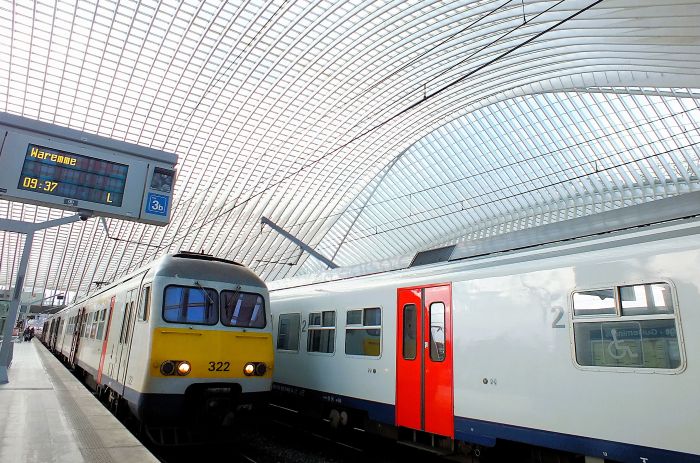
On 5 November 2025, the European Commission unveiled an ambitious plan to drastically reduce rail journey times between Europe's major cities by 2040. Such an ambition would make it possible to integrate high-speed rail networks and cover the many gaps in the current coverage. Such an effort would make it possible to limit the use of short-haul flights within the European Union as part of a reduction in the carbon footprint.
Brussels is presenting this initiative not only as an infrastructure strategy, but also as a climate measure. According to Commission figures, rail transport accounts for just 0.3 % of transport sector emissions, compared with 73.2 % for road transport and 11.8 % for aviation.

Making rail a real alternative to air travel
" Improving journey times between European capitals is a concrete and pragmatic result of our desire to make Europe more united and more efficient. "said Commission Vice-President Raffaele Fitto. Under the proposal, the Union's main cities would be linked by a strengthened high-speed rail network. Brussels estimates the total cost at €345 billion, financed through a more strategic use of European funds. To achieve these objectives, the Commission is calling on the Member States to synchronise their construction schedules more closely. It also wants to allow more open market conditions.
If the project goes ahead, cross-border mobility will be radically transformed, with many journeys cut in half. By 2030, Berlin and Copenhagen should be connected in four hours instead of seven. The Vienna-Berlin link, currently covered in just over eight hours, would take four and a half. By 2035, Sofia and Athens will be only six hours apart, compared with almost fourteen today.
New cross-border links will also make it possible to connect the Baltic States and travel from Paris to Lisbon via Madrid. In the longer term, the ambition is to offer an efficient network of trains. Optimally, they will run at at least 200 km/h. Or even 250 kph where economically viable.

Open up to unlimited competition
This ambition for an EU-wide high-speed network is structured around four pillars. The first aims to speed up investment, harmonise standards and eliminate cross-border bottlenecks. The Union will impose binding deadlines by 2027. A high-speed rail agreement will be drawn up with the Member States, industry and financial players to better coordinate funding sources.
The second pillar aims to open up the markets for rail services. In 2027, the Commission will propose banning the scrapping of rolling stock that is still operational. This measure will encourage an EU-wide second-hand market. From next year, a proposal will improve cross-border ticketing. It will allow seamless bookings with several operators, with better protection for passengers.
The third is the removal of restrictions on the entry of new operators. It aims to stimulate competition and make high-speed rail more affordable. The EU will promote this through better coordinated capacity and fairer access charges. On this last point, the cooperation of each State will be necessary. We already know France's reluctance or The Netherlands to real competition from their national operator...
Innovation also in the spotlight
The final pillar of this transformation will be innovation. A call for projects in 2026 will support the development of new-generation rolling stock. At the same time, simplified driver certification and the deployment of ERTMS* will improve interoperability.
According to Apostolos Tzitzikostas, Commissioner for Sustainable Transport and Tourism, " High-speed rail is not just about reducing journey times. It's about uniting Europeans. It's also about strengthening our economy and leading the global race towards sustainable transport. With this plan, we are turning ambition into action. Removing obstacles, mobilising investment in modern infrastructure and making cross-border rail the backbone of a carbon-neutral, competitive and safe Europe. Citizens across the Union will benefit from faster, safer and more affordable journeys."
* ERTMS: European Rail Traffic Management System























